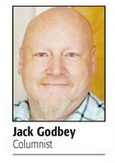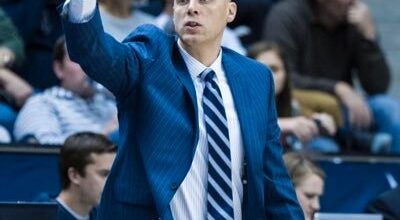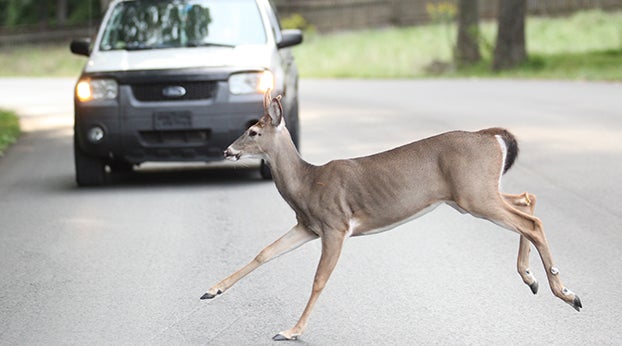Rotary report
Published 8:43 am Wednesday, May 3, 2017
Dr. Munday presents at Rotary
Rotary’s March 31 luncheon speaker was Dr. G. Swope Munday, a general surgeon with Central Kentucky Surgeons. Munday graduated Summa Cum Laude & Phi Beta Kappa from Centre College and earned his M.D. with distinction at UK’s College of Medicine.
Munday recently completed his residency in general surgery and has been published in several medical journals related to his research projects while in residency. His topic for the Rotary presentation was colon cancer.
Colon cancer is the third ranking cause of death in the United States. Each year, 140,000 are diagnosed each year and 51,000 die of the disease. It is close to an equal gender killer, with 5 percent of men and 4.5 percent of women impacted. The primary causes are being overweight, inactive, smoking and high alcohol consumption. Other factors associated with colon cancer are age, polyps and type 2 diabetes.
The best risk management practice is colorectal screening. Early detection almost always results in a cure. Colonoscopy is the gold star standard for screening. The procedure takes about 30 minutes and should be repeated every 10 years, unless other risk factors dictate more frequent examines. The 10 year interval is because polyps convert to cancer in 10-15 years.
Staging determines treatment. CT scans of the chest and abdomen are commonly used to assess stages of the disease. The stage I, II and III treatment is surgery. Laparoscopic surgery is the preferred approach, but “open” surgery is an alternative. In “open” surgery, a 6-12 inch incision is made in the abdomen, where only a 3-4 inch incision is required in laparoscopic surgery.
Robotic assisted surgery is rapidly gain popularity, because of the decrease in operative time and the reduced hospital stay required. There is also less post operation pain. Training can be done on simulators or pig models. Cadavers are also used.
When asked which surgeries occurred most often in his practice, Munday said,”Gallbladder was most frequent, followed by upper and lower vascular insufficiency and thyroid nodules.”
Rolex Three-Day Event
Lee Carter, executive director of Equestrian Events Inc. was Rotary’s guest speaker on April 21 at the Danville Country Club. Carter spoke about the 2017 Rolex Three Day event at the Kentucky Horse Park, planned for April 27-30 and broadcast worldwide in 18 languages.
Carter lives in Georgetown, is a Georgetown College graduate with a wife and two boys. He started his presentation by stating that he, “…knows nothing about horses…but I know a lot about hosting events. I have managed events all throughout North America and Europe. I interviewed for my current job in 2012, they asked me, ‘have you ever been to the Rolex Three Day Event?’ I said, ‘No, I have lived seven miles from the Kentucky Horse Park for 20 years and I have never come to the event, because you never gave me a reason to come.’ It was the truth. They had always marketed the equestrian community. I told them, ‘If you can get a soccer dad to come to the event on a weekend, then you might do something.’ Amazingly enough they bought it … they hired me … and I’ve been there ever since 2012.
“My organization ran the event in 1978, which became the Rolex Kentucky Three Day Event in 1981 when Rolex came on board as our private partner. We are a separate organization from the Horse Park, but we are housed at the Horse Park. Next week, we will have about 85,000 people come to this event… and what’s unique is… 80 percent come from outside of Kentucky. Our big challenge is, ‘How do we get the local people to come?’ I spend a great deal of time thinking about creating family friendly events to that end.”
This year’s competitors, 62 riders representing nine countries—including Olympic, World, European, and Pan Am Champions—will vie for $400,000 in prize money. The first place horse and rider will be awarded $110,000 and a Rolex watch.
“The three day event is made up of dressage, cross-county and show jumping. Dressage is a very technical event. Ten horse-and-rider teams enter the arena do their routines and get scored. One can get a good … one a bad score … and you won’t know the difference. It’s about the non-verbal communications between the horse and the rider. They have to complete the movements based on touch and feel.
“The second phase of the event is cross-country, and that is the one that is most enjoyable to watch in my opinion. They run four miles, during which they will jump 45 obstacles and do it in about 11 minutes. There are blind jumps where water is below the obstacle, so the horse and the rider have to have a great deal of trust in each other. These horses are not 2- or 3-year-old Thoroughbreds. Our horses are older, because it takes time for the horse and rider to develop the skill level and trust required. We will draw about 35,000 people for that day.
“That last phase of our event is stadium jumping. It is held in the main arena, it’s a great culmination for the event. We will have about 25,000 fans for that show.
“If you are not an equestrian fan, you can come out and enjoy other attractions. Four years ago we added the 5K run. We will probably have 800-plus runners this year. This year, we have added a beer garden. It will feature local beer from three Lexington microbreweries … We also feature bourbon, which of course is big for Kentucky. This year will are featuring a member of the Bulleit Bourbon family…last year we had Maker’s Mark. We are selling an experience.
“In 2013 we did an economic impact analysis and learned that over the three days 14.3 million dollars came into our local economy. That’s new money coming into our community. Our goal is, how do we get those people to come back?”






